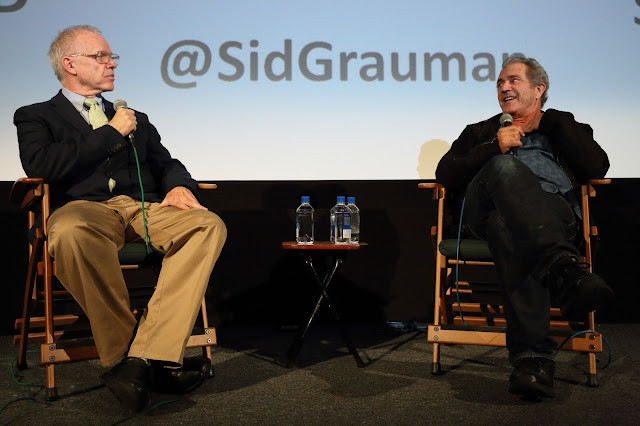 |
| Photo by Robert Enger |
The movie itself is astonishing, simply because it’s true. Desmond Doss, a Seventh Day Adventist from Virginia (played by Andrew Garfield), enlists in the army after the attack on Pearl Harbor, but owing to his strict religious beliefs refuses to carry a weapon. Instead he plans to serve as a field medic.
They say truth is often stranger than fiction and Gibson himself admitted there were parts of Desmond’s story too outlandish and unbelievable even for Hollywood. “Pretty much everything you see in the movie happened. We might have changed a few things here and there to make it ‘cinematically appealing,’ but everything happened, in fact, there were things we didn’t include because they were just too crazy! People wouldn’t have believed them.” Pressed for a specific example, Gibson smiled wryly before recounting that a seriously wounded Doss, upon noticing a more gravely wounded soldier, threw himself from a stretcher before crawling to the man’s aid, finally commanding (presumably stunned) medics to take the man away.
For those of us born past a certain point, Mel Gibson is an action star, but it’s worth drawing attention to the fact that he earned his stripes in independent Australian cinema before the movie stardom of Mad Max. It was during these early years that he cultivated a reputation as a versatile actor with star quality, and although it’s no debate that he is one of biggest action stars in Hollywood history, his range and accomplishments, especially behind the camera, are often overlooked. After all, here is a man with a Best Director award to his name (Braveheart, 1995), not to mention the astounding Passion of the Christ and the thrilling Apocalypto - both written, produced, and directed by Gibson.
 |
| Photo by Robert Enger |
One of the most surprising things about Hacksaw Ridge is that it was shot on a $29 million budget in just 59 days. It’s a film that looks like it cost much more than that, and the combat sequences - which take up more than half of the film and which are skillfully crafted and sequenced - seem impossible to achieve with such a short shooting schedule. It’s a testament to the director’s skill as a filmmaker that he’s able to pull it off. “People think all the best picture nominees this year are independent except this one, but believe me, this is as independent as they come!” The combat sequences are even more impressive when you consider they were shot using just three cameras, with other footage captured using $1,500 Black Magic cameras. “Those things are incredible! We were able to put them on a soldier’s chest as he was running through the battlefield. In the end, it made for a much more cinematic experience.”
 |
| Photo by Robert Enger |
It’s integral to the story that we get behind Desmond Doss – that we both understand his beliefs and believe the resoluteness he demonstrates in the face of intense pressures to forsake them. Just as important is the band of supporting characters, the platoon, those that begin by shunning Doss only to stand behind him in the end. Gibson pulls it off, but it wasn’t without challenges, “the dynamic between Desmond and the others is essential to the movie, we had so many characters to establish and we felt the best way to do it – certainly the quickest – was with humor.” It’s why, despite its graphic combat sequences, Hacksaw Ridge has its lighter moments.
Gibson is a controversial figure to be sure. But whatever you think of the man, it’s difficult not to admire the artist. Hacksaw Ridge, when all said and done, is a fine movie. What comes after it, only time will tell.










No comments:
Post a Comment